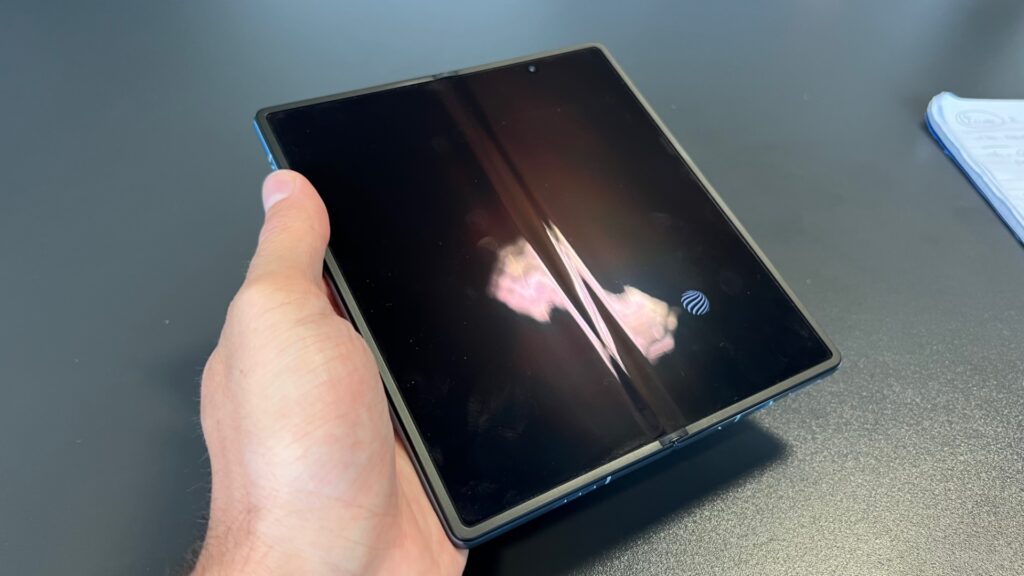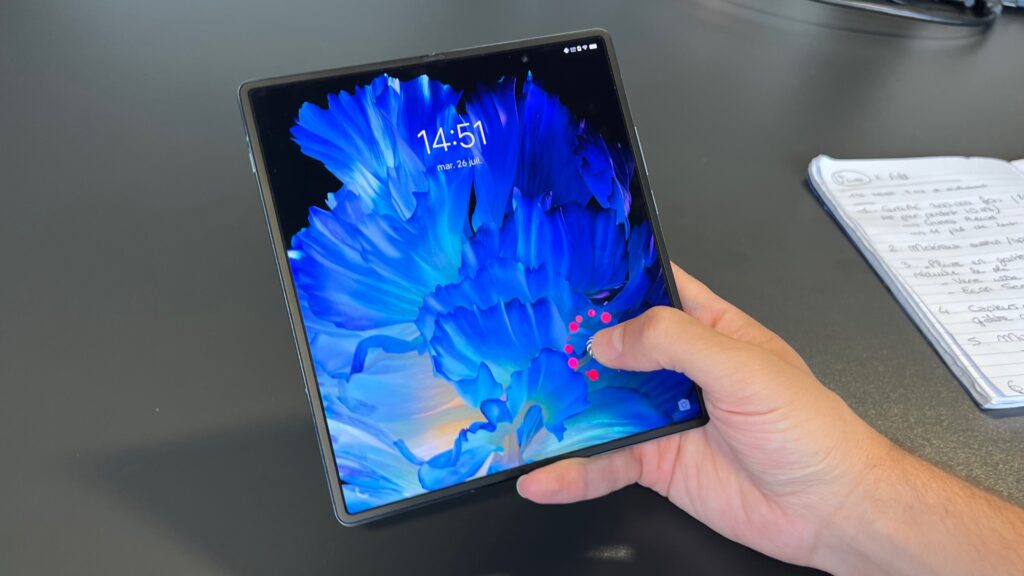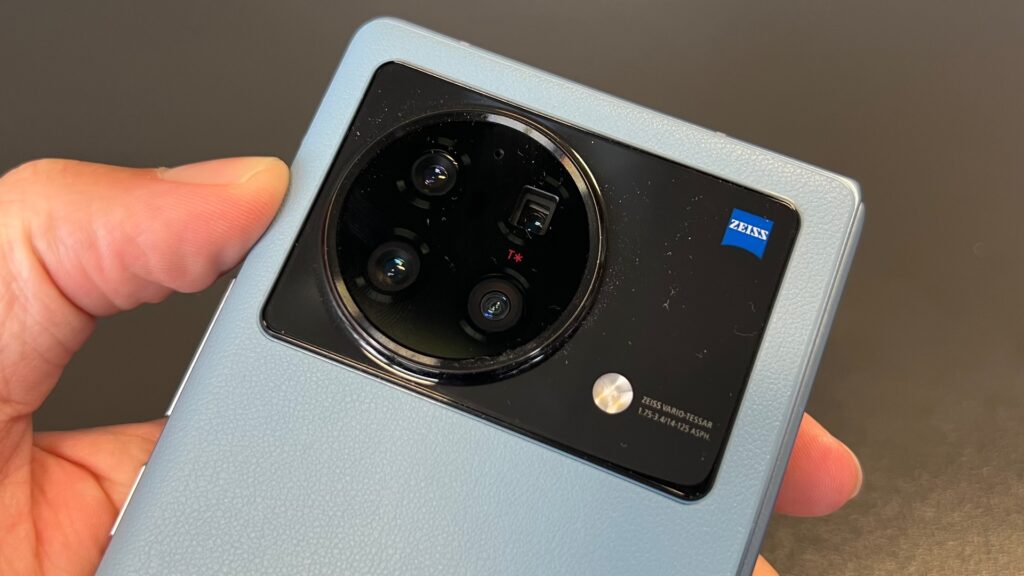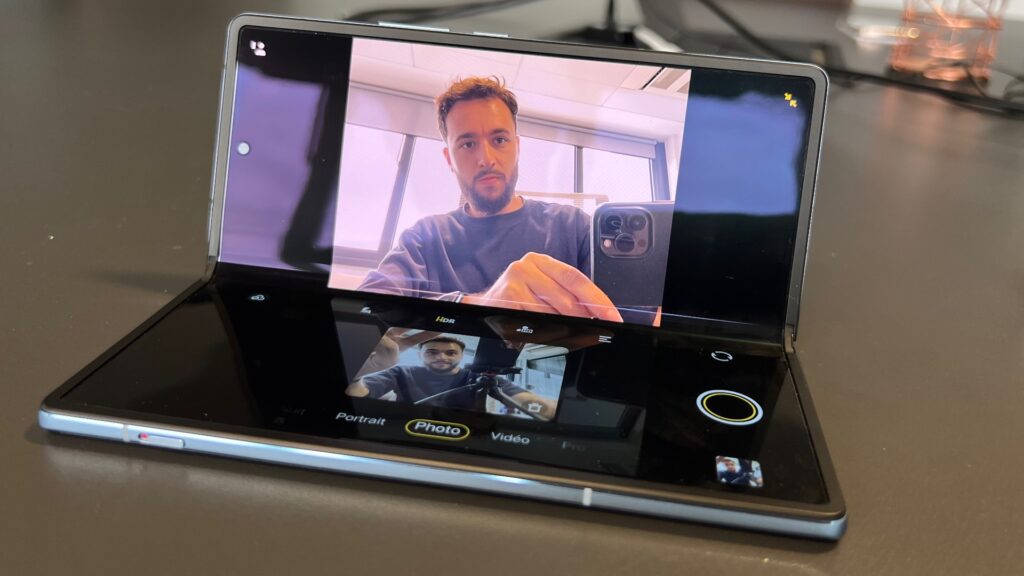Only marketed in China, the Vivo X Fold has the particularity of sporting a much more modern design than Samsung’s Galaxy Z Fold 3. It is also the first folding smartphone with fingerprint sensors under the screen.
A timid time, Chinese brands are gradually getting into folding smartphones. After leaving Samsung almost alone on the market (Huawei was also among the first, but its ambitions were hampered by American sanctions), the Oppo, Xiaomi, Motorola, Honor and Vivo are gradually embarking on this adventure, which has aims to create a new category in a somewhat dormant market. We recently tried out the Oppo Find N on Numerama, a miniature version of Samsung’s oddly successful proposition.
On July 26, Vivo France offered us to play with the Vivo X Fold, a folding smartphone reserved for China. We were afraid to see only a simple copy of the Samsung model, we finally came across a very promising proposal.
A slightly less experimental design
Why is the Vivo X Fold so compelling? Its first quality is that it doesn’t look that much like a folding smartphone. Forget the massive left border of Samsung’s smartphone, the Vivo X Fold, when in smartphone mode, looks like a regular phone. Of course, its thickness (1.46 cm) and its weight (311 g) reveal its true nature, but its screen is perfectly symmetrical. This is enough to remove the “prototype” aspect of other folding mobiles, which is necessarily pleasant to use.
By the way, like Oppo, Vivo has chosen to use a somewhat special hinge, with a fold in two places rather than just one. This allows it to have a perfectly flat device when closed, while Samsung’s Fold is >, with one side thicker than the other. Again, this reinforces the impression of using a better finished product.
Unfolded, the Vivo X Fold turns into a small 8.03-inch tablet, with an ultra-thin glass screen, like at Samsung. The folds are invisible when the screen is in front of the eyes, but are still far too invisible when the light is a little low. Anyway, we do not change our minds on the contributions of such a format. A small tablet of this size is super practical for watching videos or reading an article. Vivo may not have invented anything compared to the competition in this aspect, but it manages to align itself perfectly with its best rivals. It must be said that its supplier is Samsung Display, which is therefore perfectly logical.

Finally, since the Chinese markets love to make boxes, Vivo had the good idea to have its smartphone approved by the Guinness Book of Records. For 11 days, a machine folded and unfolded it, until it reached 300,000 openings. This makes it the toughest folding device in the world, designed to last 10 years based on 80 openings per day. We are always wary of this kind of data, but it has the merit of making people smile.
Two ultrasonic screen sensors, the good surprise
Further proof that the Vivo X Fold is a slightly more sophisticated version of what the competition is doing, it is the first folding smartphone with fingerprint sensors under the screen. All of its rivals hide one in their side button due to technical concerns (it is difficult to place a sensor under a screen like that of the Samsung Galaxy Z Fold, which is protected by thin layers of metal), Vivo is the first manufacturer to find a solution.
How does he achieve this? It simply uses a slightly different technology: ultrasound, while most brands use optics (the screen lights up brightly, which allows a small camera to see through). Only Samsung uses ultrasonic with its high-end Galaxy S today, Vivo is the second manufacturer to try it.
There are two ultrasonic fingerprint sensors on the Vivo X Fold (one on the small screen, one on the large). They unlock the device with a light tap, no matter how you use it. Ultrasound has another advantage: it works with wet fingers. Of course, it also costs more. It’s because Vivo won’t produce many X Folds that it can afford.

High-end cameras
Still in the “Vivo makes no sacrifices” category, the camera module on the back of the X Fold is unprecedented for a folding smartphone. Forget the sensors of previous generations, chosen to save as much space as possible, Vivo makes no concessions. There are four cameras on the back of his smartphone, a main sensor of 50 Mpix, an ultra wide-angle, an optical zoom x2 and a periscopic zoom x5. A score worthy of the ultra high-end, which no folding screen device has ever had.

Admittedly, this makes the back of the Vivo X Fold not very discreet. But for the absolute geek who wants a folding smartphone and does not want to make concessions, only Vivo ticks all the boxes (or almost, certain functions like the gimbal of its other smartphones are not there).
The software, the only weak point
You have understood it, at the hardware level, the Vivo X Fold crushes everyone. Despite its relatively compressed price of 8,999 yuan (or 1,300 euros, but taxes must be added), the Chinese brand’s folding smartphone has without a doubt the most complete technical data sheet on the market. This makes us even more eager to check out Samsung’s upcoming Galaxy Z Fold 4, which will be announced on August 10. Will the Korean let himself be eaten by the Chinese, when he is their supplier?
However, at the software level, it is clear that Samsung is still far ahead of the competition today. If Vivo France puts forward the argument that the device uses a Chinese version of the OS, we did not find any settings dedicated to the folding screen on the device, while Samsung offers plenty of experimental functions to make the experience better (for example, to put an application only on half of the screen, in order to use your Z Fold like a small laptop).

Absent these functions, the Vivo X Fold is just a large smartphone (or small tablet, matter of perspective), not a new category in its own right. This is undoubtedly what justifies its international unavailability for the moment. Only Samsung knows how to make practical folding smartphones on a daily basis.
Anyway, it seems obvious to us that 2023 will be a pivotal year for this category, with the launch of several products, this time internationally. Let’s hope prices fall, which is off to a bad start given inflation. Next meeting on August 10, with the 2022 generation of Samsung’s Galaxy Z.
